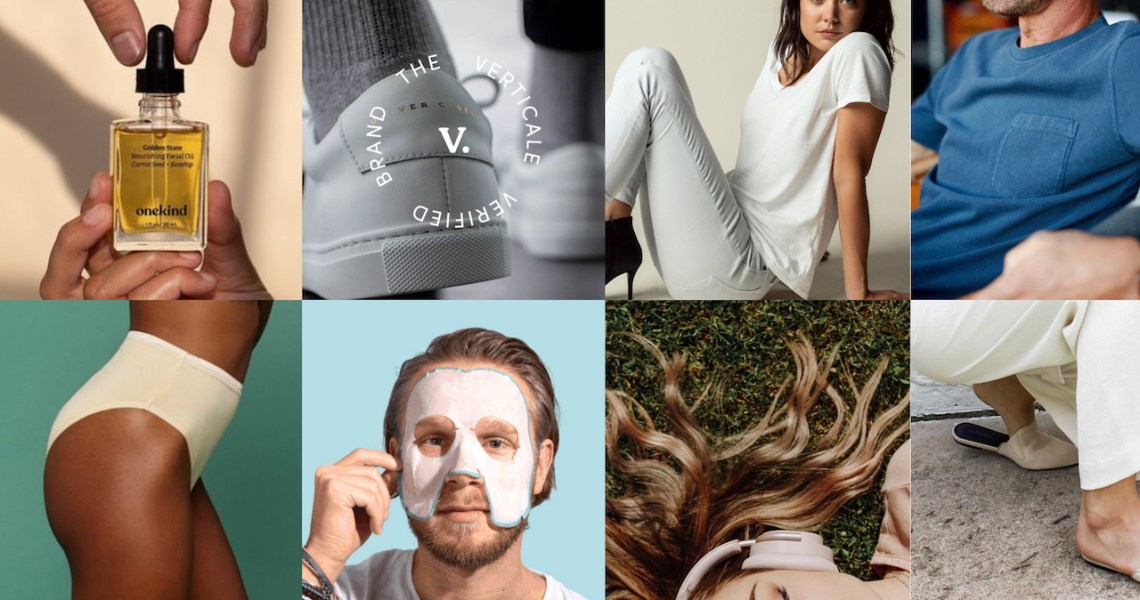Malls may not be doing so well IRL, but DTC brands have discovered the value of consumers browsing for multiple brands in one place.
On Wednesday, DTC lifestyle site The Verticale launched an online marketplace of 50 digitally native brands spanning beauty, personal care, fashion and home. The beauty and personal care brands include hair-care brand Act + Acre, Gen Z-focused personal care brand Blume, skin-care brand Onekind and Ayurvedic skin-care startup Aavrani. Brands in other categories range from sustainable underwear startup Knickey to millennial frying pan brand Caraway. The Verticale uses a drop-ship model.
“Our approach is really a lifestyle approach,” said The Verticale founder and CEO Jaclyn Grauman. She started the site to offer editorial content with product reviews, recommendations and information about new brands, relying on affiliate links.
With thousands of DTC brands now on the market and high ad costs on Instagram, trendy DTC startups face a dilemma of how to create consumer awareness. Sites like The Verticale and Thingtesting have jumped in to curate brands with an aesthetic that lives up to the DTC world’s design-focused standards. Now, DTC brand-focused vertical marketplaces have become a new area of interest for investors.
“It’s really hard to keep your acquisition costs low and be able to scale,” said Michelle Silverstein, The Verticale’s co-founder and COO. DTC brands “only selling on their own sites or own stores are needing to find another way to get in front of customers.”

Michelle Silverstein (L) and Jaclyn Grauman (R). (Courtesy photo)
In the beauty and personal care space, few DTC startups — apart from standouts like Glossier — remain limited to their own channels for long, and many launch with the goal of eventually finding retail partners.
Ad position: web_incontent_pos1
The Verticale is not alone in attempting to be the DTC version of the mall. Since Covid-19 hit, Staycation by Maude, Elliot’s Virtual Mall and Take Care Market have all popped up in attempts to be a cure-all for DTC brand woes. The benefit of these multi-brand sites has been to pool like-minded customers, introducing one brand’s fans to DTC labels in other categories. One key aspect of the original DTC business model had been to cut out the retail middleman to keep costs low. Traditional retailers charge brands “an arm and a leg,” said Silverstein. The founders did not say exactly what their take rate is for brands, but Silverstein said that the costs are “far less” than wholesale.
DTC brands are seeking out a variety of new online retail formats that can reach a millennial and Gen Z audience — Instagram has also been building out curated shopping content as it invests more in e-commerce.
Grauman, a Lord & Taylor alum, said in her previous retail experience, she has seen the “brokenness across the wholesale business.” She added that retailers “placing wholesale orders six months in advance” without good use of data “is a big part of the reason that digitally native brands have been able to really capture as much of the market as they have.”
The other issue that can attract brands to sites like The Verticale is that of brand equity, a concern that keeps many DTC brands wary of mass-market options like Amazon.
Beyond the site’s style-focused design, Grauman said The Verticale emphasizes having a “point of view” with ethical standards that brands are required to meet for areas including sustainability, clean ingredients and inclusivity. For the U.S. election, the company organized a group of DTC brands to participate in a voter turnout initiative and was among the companies that celebrated the Biden-Harris win on Instagram. “People don’t want to just buy stuff. They want to feel like they’re a part of something,” she said.




